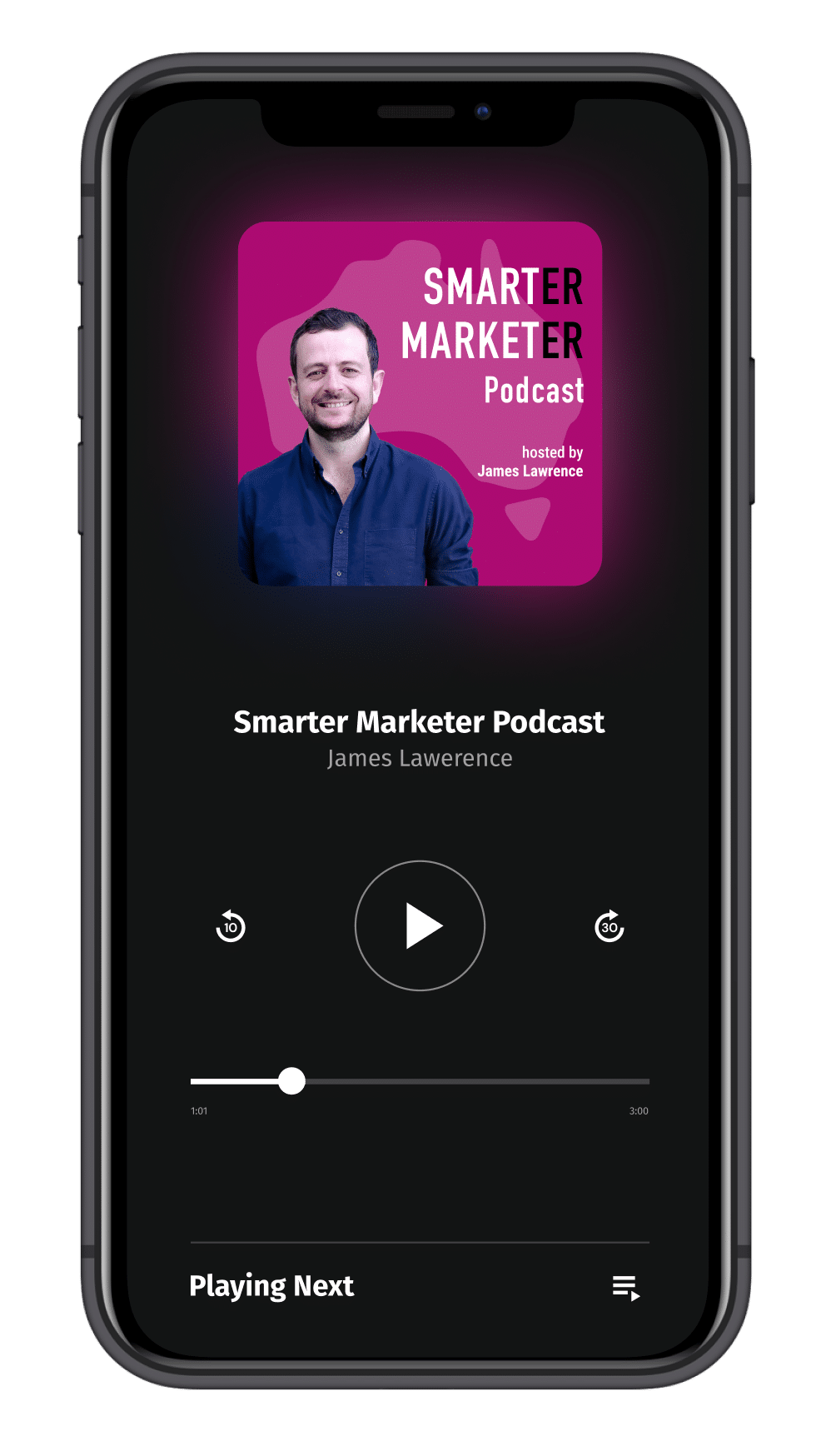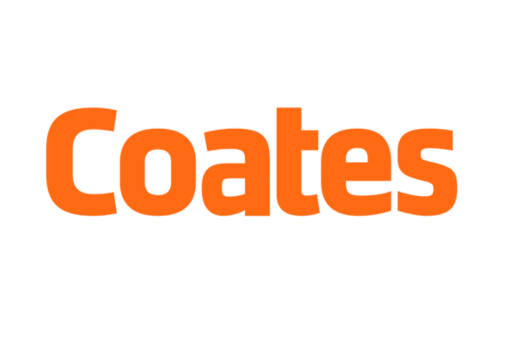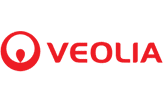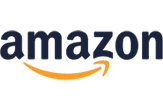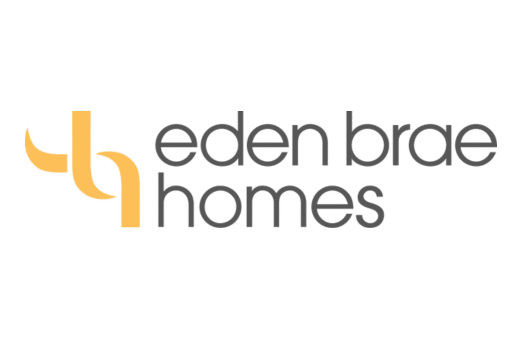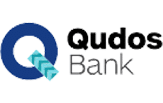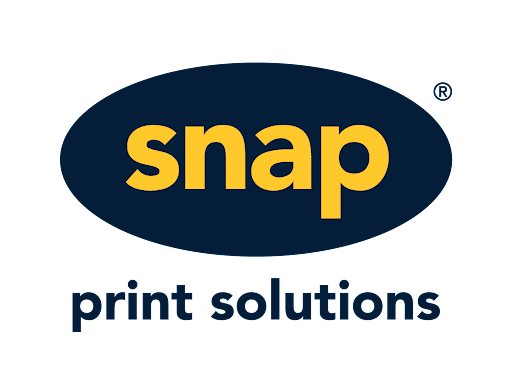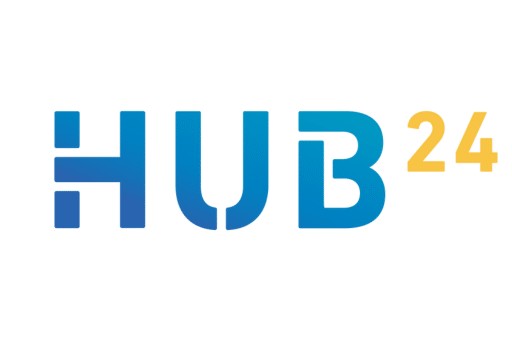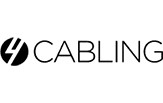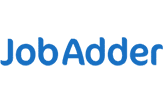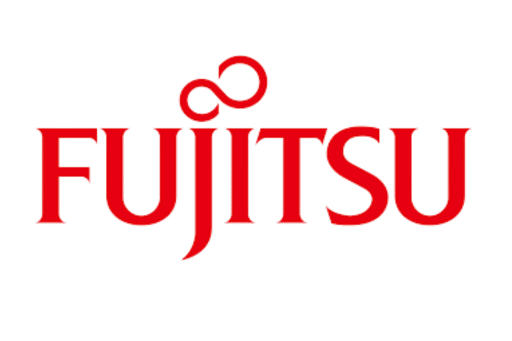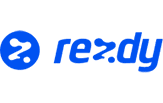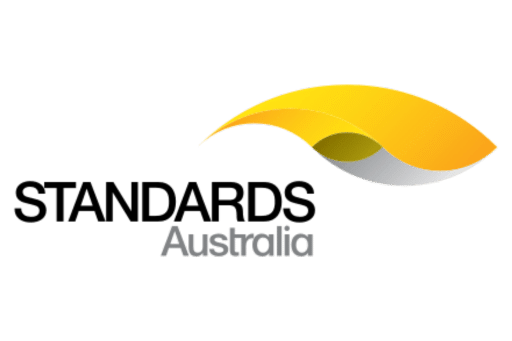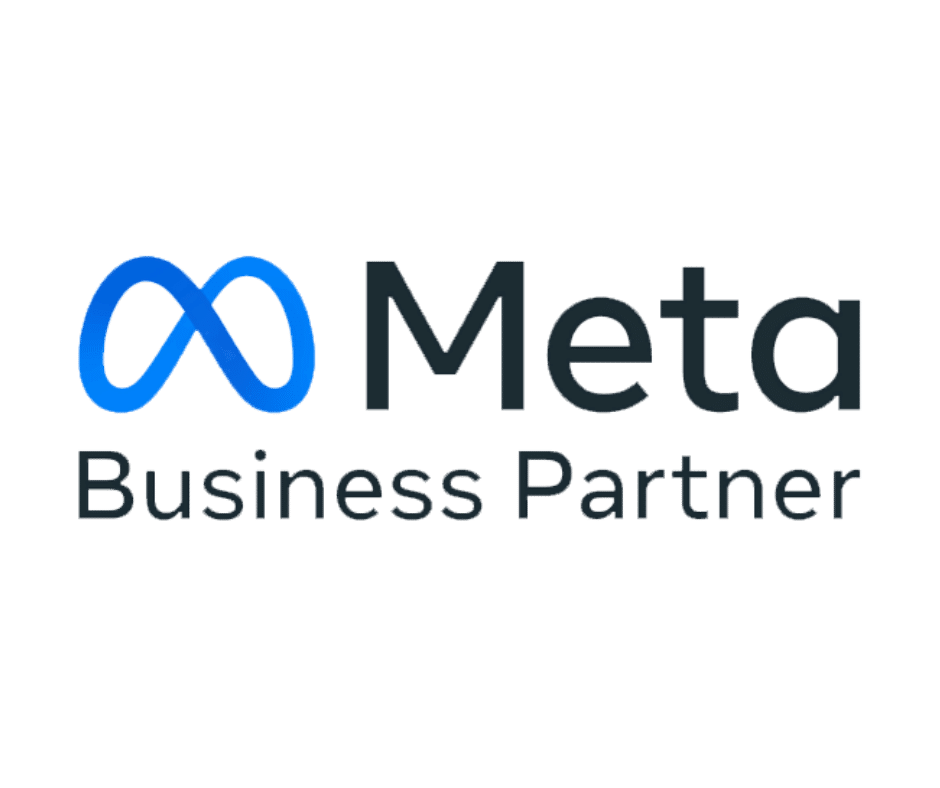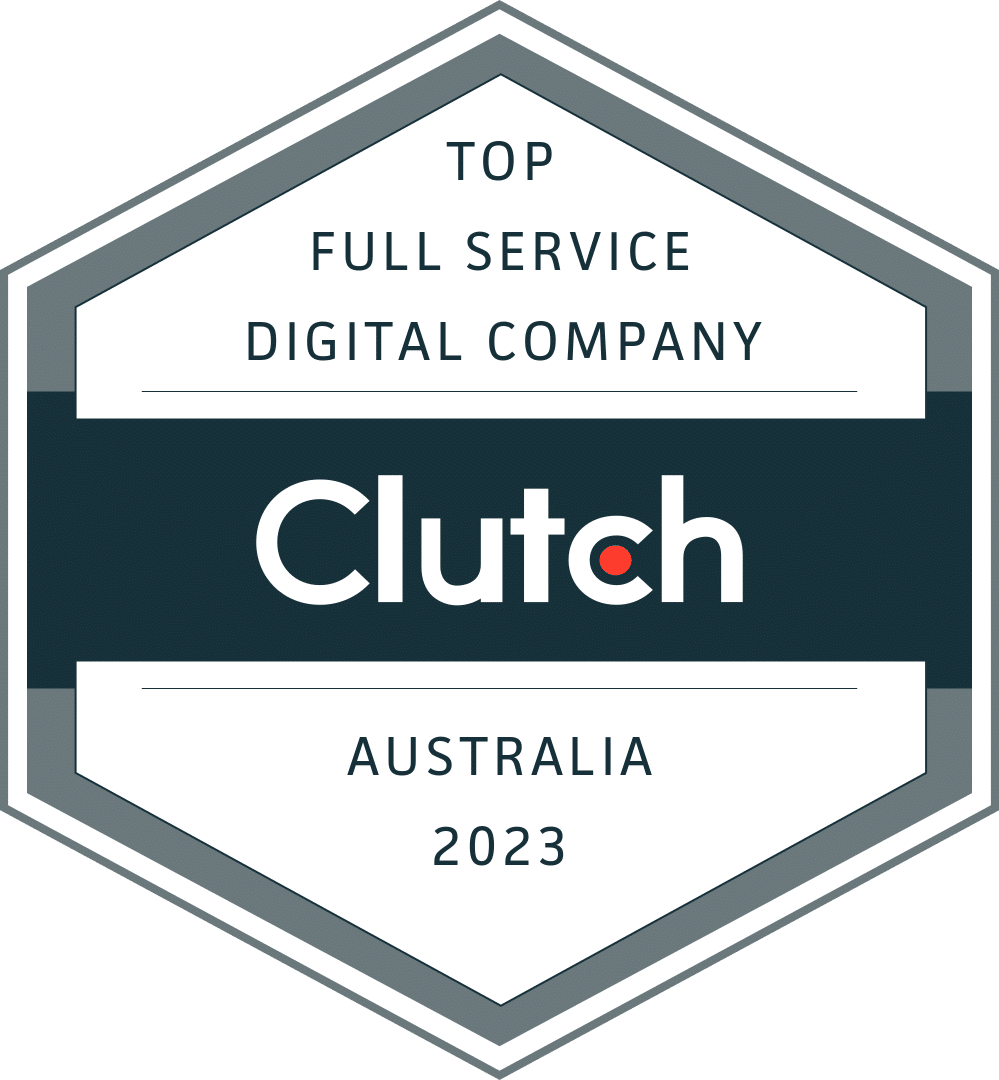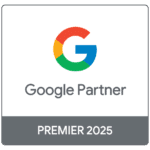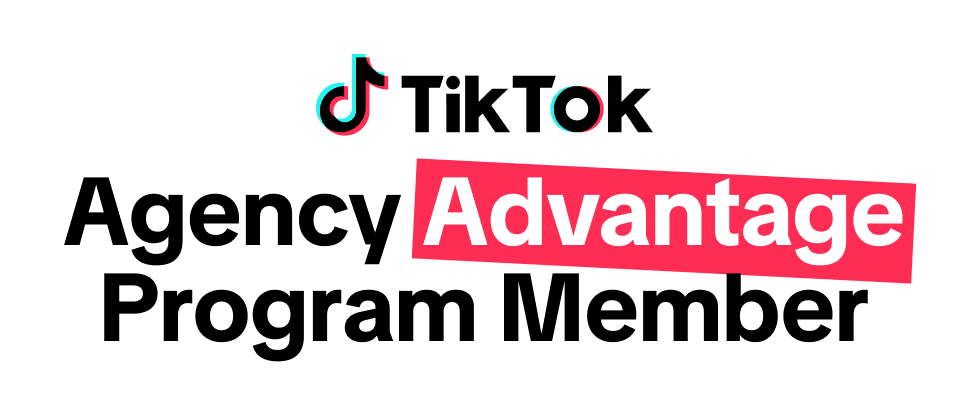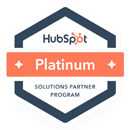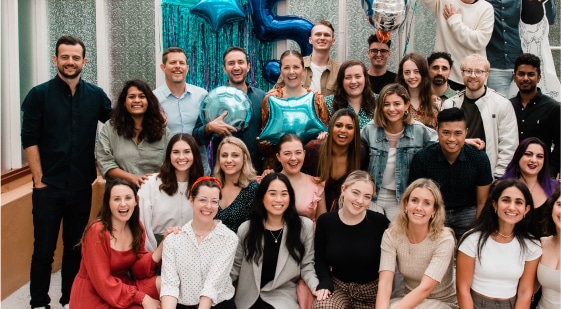Current vs Future Demand: Why Mental Availability Matters
Episode Description:
Key Takeaways:
- Why marketers are pushing back against vanity metrics - and what they’re focusing on instead
- How big brands and small brands should think differently about performance vs brand
- Why chasing perfect attribution can lead you in the wrong direction
- What you can measure when it comes to brand - and how to make it count
- What to prioritise when building future demand in B2B vs B2C
- How to stay top of mind with buyers long before they’re ready to act
Meet James Lawrence
Host, Smarter Marketer Podcast
Co-Founder of multi-award-winning Australian digital marketing agency Rocket, keynote speaker, host of Apple #1 Marketing Podcast, Smarter Marketer, and B&T Marketer of the Year Finalist.
James’ 15-year marketing career working with more than 500 in-house marketing teams and two decades of experience building one of Australia's top independent agencies inspired the release of Smarter Marketer in 2022, the definitive podcast for Australian marketers. The show brings together leading marketers, business leaders and thinkers to share the strategies that actually move the needle.
Each episode offers candid conversations, hard-won lessons and practical insights you can apply straight away.










James has delivered keynotes at:
Nick Palmer
CEO, House of Brand
About the Guest
Nick is a brand and communications researcher and strategist, and a recognised specialist in measuring advertising effectiveness, with global experience in agencies ranging from Millward Brown to Hall & Partners. Through his role as CEO at House of Brand, Nick relentlessly pursues breakthrough brand insights for clients.
You can follow Nick on LinkedIn.
Transcript
James Lawrence: Welcome back to the Smarter Marketer Podcast. I'm here today with Nick Palmer from House of Brand. Nick, welcome back to the pod.
Nick Palmer: Hey, James. How you doing?
James Lawrence: I am very, very well.
So Nick, I went to Forward Sydney a few months ago, listened to Byron Sharp talk, put out just my summary of his presentation and it's incredible, I posted it on a Thursday, I think in Sydney and it took off to the extent that by Friday afternoon it had maybe 5 to 10,000 impressions and maybe 60 to a 100 people engaging with it.
And then Byron himself engaged with it and it just went ballistic. It was seen a hundred thousand times or something like that, and it's got a thousand engagements from marketers all around the world, people in Germany, people in Brazil commenting and asking me all these questions and me jumping in and responding.
And I think on the back of it you said, "Oh, we should do a pod." It's obviously a space that you play a lot in so yeah, it'd be good to have a chat with you as to the resonance of that post and where marketers are with it as we get to the midway point of 2025.
Nick Palmer: , I think the reason it took off is because Byron responded and therefore it goes out to a fairly wide network and all of that kinda stuff. And he doesn't always respond. So when he does people notice it. , But that is part of a bigger thing around this real.
Interest, focus attention on, let's call it marketing science, marketing effectiveness, actual empirical understanding of how marketing actually works, which Byron and Eric Mo Bass Institute and , their books, how brands Grow, et cetera. Were the earlier pieces out there that got widespread acclaim, read by everyone on everyone's bookshelves, things like that.
So , it feels like the era of marketing effectiveness. , And whether it's everyone doing mark's mini BA or people doing. , The Masters of Effectiveness with James Herman, which I've done, or , you know, or Rory Sutherlands blowing up on TikTok , any of those kind of things talks this kind of fascination with, , this renewed, , drive towards looking at actually how marketing really works. , And I think the other thing is. It's risen as an antidote to the highly measurable world of,
performance marketing. , Vanity metrics, all that kind of stuff, easily measurable below the line activity, et cetera, has meant there was a tip in favor of budgets pushing towards that space rather than brand building.
And it's risen as a bit of an antidote to that I think.
James Lawrence: I'm surprised you didn't, , have a little jab at me. 'cause , I think it was during COVID, we thought it'd be fun to, , enroll in the Ritz and mini MBA , and Nick may or may not have, , passed , with a higher grade than I did.
Nick Palmer: I can't actually remember, but yes, I, um, I do remember swapping notes on the, case study, which they do actively encourage you to do actually, which is a good thing, right?
Because it's like you're not, you don't do business alone, so why not share notes, Nick? So, yeah, it was good. It was good to, I'll maintain that. You sabotaged me. Yeah, exactly. Yeah, yeah, yeah, yeah. I stole all your good ideas here. So
James Lawrence: what are you seeing, like , you've got a pretty interesting mix at House of Brands, so , don't give away anything you can't, but the types of businesses you work with and where they're at in their journey around , this conversation.
Nick Palmer: Yeah, I think so. , We work with , some of the bigger end of town, , you know, CommBank and Woolworths of the world for those of you in Australia.
So some of , the biggest brands in Australia, , right down to startups, , charities, things like that. I'd say at the top end of town maybe things haven't changed that much. They've got. They've always invested in brand.
That's why they're the biggest brands in Australia. They've, , got plenty of budget to spread around and put it into different buckets and parts for performance versus brand and all those kind of things. So maybe at that end it , hasn't changed that much. . But it's more at the smaller end of town.
And when I say, , smaller is of course most of the businesses out there, of course, and most of the marketing that happens, there, we've seen a , , switch to, we haven't got much money to play with where's that best placed? , And . We're either coming to the conclusion or wanting the evidence and seeking out the, , story internally of the best thing we can do is invest it in brand, , , but let's not fall into the trap of going, well, we've only got so much money, so we must make that all work for us in terms of direct performance, immediate return, et cetera.
That's probably where we've seen. The biggest shift, , not just in terms of the actual output, but in terms of , the mindset or the, what they're looking to do, and I think that's where all the stuff has really helped. It's helped those marketers have those conversations with those.
, The C-suites, , the holders of the purse strings to go, this is the right thing to be doing. This is all the actual empirical evidence that shows that this is what we should be doing with this money.
James Lawrence: , Yeah, it is an interesting one and . My career has been built more on that performance side. . Where at the very beginning it was, , literally doing paid search ads before Google had a paid search platform in the country. . And in My business prior to Rocket, we would go out there and we'd go to businesses and say, Hey, like you're putting all this money into Yellow Pages or outdoor advertising. , The old adage of, you know, half my marketing budget's wasted. I just dunno which half 'em we'd say that , we can prove it to you.
, Give us whatever it might be. Give us 50 grand and we'll pump that into Google. And if you generate X number of leads and if the sales, , are more than 50 grand, then , keep pumping it in. And it was a pretty easy kind of conversation to have. Yeah. And we. Genuinely used to look at , the big end of town and the big agencies and talking about brand and whatever else going.
All they're doing is hiding. , They're not willing to come to the party by way of metrics and. That definitely changed, right? , We saw that in digital things became far less linear, , this perfect kind of one or two touch paths to conversion. , Drive with Google Retarget with Facebook and that kind of is your marketing funnel.
And I think for the last kind of eight to 10 years that's been firmly. Shattered. . And digital now is just as complex and confusing and confo founding as traditional marketing , and , we are constantly trying to educate our clients that like. If you come into it saying, oh, I'll make all my decisions based on data, you are setting yourself up to fail tremendously quickly.
Yep, yep. , That's not to say that measurement isn't important. It really is. Attribution is more flawed than I think most marketers are willing to ever agree with. And I think it is really challenging where we or admit Yeah. Or admit. Yeah. And I think part of it is like we've educated.
Business owners and C-suite and CFOs and whoever else over the last 20 years that everything can now be measured. Yeah. I'll make all my decisions based on data and it's actually not how marketing works in the real world. Yeah. It is such a challenge. What do you observations of the best teams that you work with, how they have those conversations, how you bring non-marketing stakeholders , on the journey.
Nick Palmer: Yeah, , um, , Brent Smart, who's now CMO at Telstra used to say, , I know this will work, but I'm worried that they'll turn the taps off , before it does them being the board, et cetera.
. So , he quite famously went in there and. , Shrifted this emotional brand space which is also doing at Telstra now. And, the issue is , is it always been finding the evidence that it is working?
How do I know that , this hasn't worked yet versus it's never gonna work. That's why it's not showing up. , And that's very hard. , And finding the right metrics, finding that kind of. Evidence of pressure for change is really hard and I do think that's where this empirical evidence is really helping because I can't show you that it's working for our campaign, but here is the evidence that this is how this stuff works. I think really helps those arguments. I think for years people have wanted to be able to show they've got that brand advertising is important and they've wanted to be able to show that the work they're doing is having an impact.
But finding the metrics that show that is very, very hard, and then you're against a sea of other metrics that go, here you go. I can show you exactly how this stuff's working. So empirical, the studies, all that kind of stuff really helps with that. . It is about having sensitive measures in your brand tracking.
And again, there's been lots of entrants in the market who won't talk too much about, 'cause they're largely in some way, shape, or form competitors to ours. But basically they're people setting up. Easy to use brand tracking for people who probably can't really afford to do it otherwise, , or might not be able to get the fund, get the, get that over the line so that people have something to go on.
And so some of that stuff's good as long as it's sensitive enough, , as long as it's not the measure, it's gonna show that change. . Sensibly over time, and the other thing is , there's been a lot of work done around share of search and that's just a really good metric of share of organic search. , A really good lead indicator , that your brand is getting more mental availability, , and being seen more. , It doesn't tell you much more than that. It just tells you that bit of, the picture. If you think about marketing funnel, the bottom half of the marketing is inherently measurable. They get into, , they come to your site, maybe they log in, register, et cetera, they convert all of those kind of things.
You can measure those bits quite easily . But it's the top that you can't measure. Very easy. You can measure awareness and things like that in a relatively straightforward way, but, , but it's the middle bit that's a bit messy, and that's where things like share of search have been found to be quite useful proxies for those kind of things.
Mm-hmm.
James Lawrence: Ran Fishkin, who's purely digital, like he's kind. Founded MOS back in the day. He's a search marketer. He's now got, , some kind of , audience research software that kind of works a hell of a lot better in, , north America and Europe than does here just based on the data that he's got access to.
But , he's kind of at war. With, , attribution, and , his line is, measurement isn't broken, but attribution is. Yeah. , And , even putting all the offline stuff to the side, , he talks a lot about the most effective forms of digital marketing are the least easy to measure.
Yeah. And so it will be things around, content marketing. It'll be stuff being shared in, , messaging platforms where. Links and credit and, , analytics don't kind of function. It'll be podcasts, people, and it's true for us, right? People listen to this podcast and might reach out to me in two years time.
Yeah. And they've been listening. Yeah. Yes. They're just a number, but so hard to track that, you know, you
Nick Palmer: can measure the, if you're lucky, you can measure the outcome, but you can't attribute it to where it came from.
James Lawrence: Very, very challenging. Right. And versus, , bottom of the funnel. For brand search and whatever else.
Yeah. So easy to measure. Facebook, last click, et cetera. Um, I suspect that, um, there'll be listeners to the pod who Yeah. Might be operating in a corporate such as similar to a Woolies or a CommBank, and they'll have agencies like yours or specialist teams doing a lot of this brand tracking stuff.
You mentioned some competitive offerings to you. Um. Pros and cons, but what are your suggestions to say someone in the mid-market, like how do you get brand tracking going if you don't have huge budgets to spend on it, is that the kind of thing your business would still do?
You'd have kind of a slimmed down offering or Yeah. Does it work?
Nick Palmer: Yeah, . As I said, we work with all sorts of businesses, sizes, varieties, all sorts of things. Slow moving, fast moving. So, , we don't really have off the shelf products, so we build it whatever's right for them. And some of it's very similar.
Some of it's about frequency, so there's lots of clients where we do one dip a year maybe, or even two, three dips a year versus. People like Woolworths, we're measuring constantly for them. , So that's one way to make it more affordable and , you can learn a hell of a lot in that time, in, in that, with that one piece.
You, 'cause you're getting all of the interplay between the data, just not over time. , There are , more frequent trimmed down options available. , They're not necessarily as efficient because a lot of the cost and researchers finding the people and getting them to answer surveys and things.
So once you've got them, you're better to ask them more questions. Then it comes down to what your category, , what's your category and how fast moving is your brand and are you a startup? , We're working with some, , startups in the FinTech space, and we're doing two dips a year for them, aligned with when their campaigns are so that we're seeing the post impact of their campaign. And each dip is the. Effectively the pre wave , for the next dip.
So, and
James Lawrence: , How do you do it , 'cause I get with B2C Yeah. Kind of getting out there, big data sets, lots of people you can go into. Yep. I suspect you just get a big enough audience that you've Yep. Statistically it's, , relevant. Correct. Yep. , How does it work where , we've got a client, for instance, , that target market, there's 16,000.
B2B prospects for them in the entire country. And I suspect in the FinTech example, there's probably, it's might be similar if it's B2B two B. Um, how do you go about running, brand tracking in those types of environments?
Nick Palmer: It can be really challenging. . Obviously well all research back into the right people, , we can have a client who's targeting small businesses and we can go out and talk to two, 300 for small businesses, but they're the wrong kind of small business. They're just not interested in what they're doing.
, And obviously. Sometimes it's very hard to define a target market for a particular startup who might be almost creating a market. So that can be really challenging. , The research panels are available for those things. You just have to work with smaller sample sizes, , largely, but of course they're represented a much smaller group of the population, so you can get away with that to a degree.
, You can spend a lot of money, especially if you're a startup, you can spend a lot of money to find the right people to talk to and find out that your awareness is 5, 6, 7, 8%. Right? , And then I wouldn't say the rest of the.
Survey you do with 'em, or the interview you do them is wasted. , 'Cause you can find out about your competitors and you can find out the dynamics in the market, but you can't find out much about what they know about you because you just don't have the base size . .
, So , we've often start recommending now that people instead do a series of, , what in the industry we call, . More IDI depth interviews, basically. So you, so they're one-on-one semi-structured interviews, 20, 30, 45 minutes for people. And you're not gonna get a complete, like, for like, , last wave.
We're at 50% now at 56%. But you're gonna gonna make more use of that time with those people to really find out a lot more about the pedigree dynamics and where their brand at now. Because , if your number one thing is I need evidence to show to my board or whatever, that this stuff's working, maybe that's not gonna work.
You're not gonna be able to say it was 56, now it's 60. You're gonna say more of the people we talked to felt more favorably about us this time. . But without putting a real number on it. So , if you're after real evidence, it does get quite hard. Maybe things like share of search come into play there.
It is a common problem. , There are specialist B2B agencies, but they tend to focus on, finance and things like that, . Having said that, we do a business tracker for CommBank and we speak to a few hundred people every month in that.
. But that's fairly broad reaching, obviously. , So it's all doable. It's just, , a little bit more pricey than doing consumer interviewing, unfortunately. , I'd much rather have a smaller sample of the right people than someone deliver you a sample that's ostensibly your target market, but isn't really, and therefore.
You know, it's just like, well, this doesn't make sense. They don't, they're not talking the right language. , , Your client shows data to their stakeholders and it's like, well that doesn't make any sense. Why would they say that? But because , they're not the right people.
You're talking to plumbers when you need to be talking to, , it people , in tech companies and things. So , less of the right people. Yeah. Which sounds like fairly obvious quality over quantity, but people. Chase, statistical numbers when actually that's only statistically valid if the sample's valid in the first place.
So,
James Lawrence: yeah. And I think you touched on it, right, which is, non marketers want simple answers. Yep. Things that are actually just complex , and nuanced and difficult, and that's the reality of it. , I think we joked the. One of a few of the things that kind of remain with me.
The first one was great marketing starts with research. Yep. And he talked a lot about the qualitative, um, research, you can rely on a surprisingly small. Yeah. Uh, uh, number of respondents. Yeah. Which you act once you start getting past a pretty small number, things don't really materially change very much.
Yeah. And , you can really lean on that pretty heavily. Yeah,
Nick Palmer: a hundred percent. , And that's the thing to do. And , we do qualitative research for consumer companies as well, for B2C as well, obviously, , but for B2B, it's , where I think people should go.
However, a lot of the time we get. We get that call and we get the call from that person because they wanna prove a case or show something internally, and therefore they want numbers. And that's where I think , the depth interviews and then. Align that with some of the marketing evidence that's out there these days and some of that, obviously a lot of that evidence talks in a consumer space for obvious reasons, but there's a lot of evidence that that all absolutely holds true into a B2B space.
Mm-hmm. People are people after all, they, , there's actually arguments. People make decisions more emotionally in B2B than they do in B2C because they have. Reputations to maintain jobs to keep and all that kind of stuff. , They are risking more than, you know, if, if you make a decision as a person for something for your own benefit, um, you are only risking you or your dissatisfaction or your whatever, buying a drink that you don't have the taste of.
Whereas if you're buying something on a B2B, you're gonna, let, a lot of people down so people actually make more emotional decisions in B2B.
James Lawrence: It's quite interesting I collated my favorite kind of eight takeaways from Byron's, uh, yeah.
Presentation. And one of them was just simply B2B is hard, and it was very interesting. I would suggest that probably half of the comments where there was actually discussion being had probably more well from B2B marketers questioning. A lot of Byron Sharp's work in the space , suggesting that not all of it necessarily, , related to them.
It was an , interesting viewpoint from B2B marketers. I
Nick Palmer: think some of it does, and, all of these, Byron, mark, mark Ritson, all of these people, they have to go out with a very strong opinion down one channel , and the thing that absolutely rings true from all of that work is, the idea of mental availability, of just making sure your brand. Is known and , known for things. A lot of it's stuff around, , heavy and light category buyers and stuff. Sometimes that flies out the window. When you're in a B2B space. You're not gonna be a heavy category buyer of, , complicated IT systems, right? You've got one or none. And so I think a lot of that stuff flies out the window. I think there's other stuff that I personally just don't necessarily believe in and a lot of other people don't, which is about.
There's no such thing as differentiation. I don't think , that's true, but that's not so much a B2B B2C thing. No, that's just that I don't necessarily buy into that. But there's some really good evidence I've seen recently around, , just things like, um, in a buying group, , if there's a buying group to make a B2B decision.
, I can't remember the start off my tab, top of my head, but let's say it's basically 90% of the time the decision will go to a supplier, brand, company, organization, whatever, who, , everybody in that buying group had heard of before that process started. , And that hardly ever does the decision go to.
The experts within that buying group's recommendation, if that differs from everyone else's. So if it was an IT expert and a broader decision making group, and they said, , this is the, , mainframe, we should go for whatever anyone buys mainframes these days, um, that go, that go. , If that differed from what everyone else, it would very rarely go because , I ultimately they'd back down because it's not worth their job to, it's the nobody got sacked for.
Choosing IBM thing, right? It's ultimately not worth it for them. So they don't, but what that means is , the how brands grow. Buy and sharp stuff around mental availability and that you should target everyone, not just target narrowly, absolutely rings true. You need the CFO to have heard of you, not just the person who is dealing with whatever specific thing you are trying to sell to them, because that will make the purchase go through much more stronger.
That doesn't mean you need to take the CFO to the Swans game or take them out for dinner or anything but you. What that means is you need to have some above the line advertisers, some kind of advertising that they are going to see. When they're not in the market for it. You know, , CFO doesn't care about mainframes.
They're not gonna read the IT magazines or again, I don't think anyone reads it magazines anymore. But, um,
James Lawrence: let's call, let's call it, let's call it a CRM Nick.
Nick Palmer: Yeah. CRM. Yeah, yeah, yeah, yeah, yeah. Your world, not mine. Um, and, but they are gonna. They're gonna be watching the footy and seeing out of the footy, or see your signs, , your banners , around the edge of the pitch and things.
So that's the kind of idea that you need to be known amongst those people so that when someone goes, Hey, I reckon we should go with. Rocket, and they go, oh yeah, I've heard of them. They, I've read, I've heard their podcast. Cool. Okay. They seem like good guys. Let's go with them, kind of thing.
So that's the idea, , and that's an idea . Uh, James Herman, who I mentioned before, is talking about this idea of future demand and current demand. Which is really just a relabeling by his own admission is really just a relabeling of the kind of brand investment versus performance investment, the long and the short of it thing.
, But it's a better language to understand how , to convince people why that brand investment is important. It's not about, oh, we must build brand. Well why? It's saying , we are creating , or tapping into future demands. We are getting people primed so that when they are in a decision making.
Process capacity, whatever , that our name is in their head, and therefore that smooths that purchase, smooths that decision making
James Lawrence: a hundred percent. And. I find it really frustrating , and it is hard, right? Because we're a full service digital marketing agency, so we wouldn't speak about being a performance agency, right?
Yeah. We do lots of work in channels that are traditionally viewed as performance channels, but, , Google, SEO, that can be top of the funnel. SEO performs much better in B2B than it does in B2C because of that long buyer journey content, top of the funnel type stuff. Um. And it can be really frustrating where a client or prospective client will come to us and , we have, and , do lots of work in B2B SaaS and it'll be, Hey, awesome news.
We've got 50 grand, a hundred grand to put into this campaign, but , the next quarter to drive, , demand gen drive performance for the sales team. And the bit of software that they're selling is, yeah, similar to A CRM, probably something that. Gets put into a business once every five years.
Um, it'll be something that gets put into a business every three years. It'll be something that, yeah, like there might come a mo a critical moment sometime in the next 1, 2, 3, 4 years, where. You will make a decision like that, but you can't force it. And it is kind of a 9, 5, 5 rule, which I think most marketers would be aware of, which is, , in most markets, uh, only 5% of , a market are in market at that moment.
But in complex sales like this, it's probably far less than that. Right. You're probably, yeah. 99 1. And . I've got the article up here. It's , what B two Bs need to know about their buyers. And I think that's where that stat you were mentioning before. Yeah. Which is 80 to 90% of respondents, depending on what they are buying, have a set of vendors in mind before they do any research.
And just as importantly, 90% of them will ultimately choose a vendor from that day one list. So the idea that you're just gonna come in there and play. In the space when people are bottom of the funnel in Google, looking to plug a CRM in too late Salesforce, HubSpot, they've been doing that. Marketing for the last 10 years.
Right? And that's not to suggest that every listener on this, pod today should be taking out airport, you know, no, no space and billboards and football stadiums, but it is to put yourself into the mindset of your buyer. How often. Are your services procured? Who are you competing with?
How do you get into the mindset of your future buyer? , And I literally sent, some client, and they're really receptive to this stuff, right? But , , they have a double problem. One is there's a very low awareness of their category, right?
They think that's somewhere between five to 10% of prospective buyers would even be aware that their category exists. , And within that, they're probably actually quite well known. , But yeah, , I literally sent three copies of, , how brands grow and three copies of the long and the short of it to help them have those conversations with other stakeholders in their, yeah, in their businesses.
'cause they, they've tapped out, they're getting roughly half of the sales that happen every year in that category. So , it's actually about how do we grow the pie, right? Yeah. Which, , separate but related concepts.
Nick Palmer: Yeah. , Which is when we hear a lot from. Startups, scale ups, whatever you wanna call them, where , they've gone through their low hanging fruit, they've gone through the people who are just sitting there waiting for them to exist.
. And now , maybe they've got some VC investment with some kind of massive growth trajectory planned , or expected. And it's like, right now how do we move in? That's where it's like, okay, , and I think the challenge there is, okay, some of that they need immediately, but the reality is what they now need to start doing is actually properly investing , in the brand, which is sales.
They'll only see two, three years , down the track. But the long and the short of it as. Many people say the most important word is the, and , to your example about the 95%, the 5%, , the selling, , the software that they buy every three years.
It's like you have to, then you have to create, you have to do the brand work, you have to do the activation. That means that you are the one that's on their shortlist, that they actually choose, or , you make that as frictionless as possible, so you've gotta do. Both bits of it, but the weight of the spend needs to be much more in favor of the long , than the short , as it famously goes into.
But, coming back to Byron Sharp, the double jeopardy thing. , The big brands just win more. It's just easier for the big brands to keep winning because they are mentally available. They are on that shortlist in the first place. They will get their unfair share of the decisions just because they're there and people know about them.
Mm. Even though they're not necessarily the, superior option. It's the safe. The safe bet, right? Safe bet. Yeah.
James Lawrence: Yeah, and I think , a lot of this would not come as a surprise. Right? Yeah. And I think these are the conversations that are taking place within marketing teams. Pressure being put on marketing teams.
Marketing teams, a different level of effectiveness, trying to educate and push back internally. I really like the current demand versus future demand, , terminology. 'Cause. Brand quite wrongly , has a , bad name. It's like, it's all pretty pictures and fluff. We all feel, we all, it's fluff, we all feel different towards brand.
What , comment would you have around this concept of future demand and , how does a business set themselves up to make sure that marketing and advertising is as effective as possible?
Nick Palmer: Yeah, , you've nailed it in terms of , why that language , is important. , I think , when you start thinking about things in this, you see advertising, communications, marketing in quite a different light. And that is that for that 95% are aren't in the market.
They're therefore not gonna be. Accepting, susceptible, et cetera, to messages that are rational are about the product, about its features. They're just, they're not interested, they're not in the market. Why would they be interested in that? So therefore, the job of all your communications is to engage them in some way or another.
Could be humor, could be drama, whatever. It's really about engaging them because you've gotta capture their attention because they're not looking for whatever widget you're selling that they, you've gotta capture their attention, hold it, and leave them with your brand name and ideally with some kind of.
Idea of not what you do, but some of what buckets put that in their mind? I guess so. I mean, Byron Sharp would talk about category entry points, but whether you believe in that or not, this, , you need to associate them with something. You need to know where they might crop up again.
But the number one thing is engage people. And leave them with the brand , and maybe some just broad positive feelings. You don't wanna leave them with a, engage them and think negatively about you. So, and if you start looking at a lot of advertising through that lens, then you realize, .
The advertising that's been done for 30, 40, 50 years. , The beer ads, for instance, the, you know, the classic carton beer ads in Australia. A lot of that kind of stuff. A lot of those big emotional brand campaigns, are doing just that. They are just trying to entertain you and this idea that.
Oh, but what's the message? Or it's not telling me what I, why, or that doesn't matter. You are lodging the brand as long as they're well-branded. I think that's the other thing that's changed is this huge focus on distinctive brand assets, brand cues, whatever you wanna call them. . Which still sadly is lacking in a lot of advertising, but it's really, really crucial.
So that you are getting the benefit of that engagement. Otherwise it's not doing anything for you. , So it's fine if it doesn't say anything, but people go, oh, well what, what does that say about the brand? , And I wanna say people, I mean marketers, market researchers, people in the industry still say that and they go, but that actually, when you start thinking it through that lens, that doesn't matter.
As long as they're engaged, we're left with a relatively positive feeling , but it doesn't need to be a specific one and we're left with the brand name. Then actually you've done that work. So coming back to an example about the CFO who doesn't know anything about mainframes, don't, you don't wanna talk about mainframes, you want 'em to.
You wanna engage 'em with something, you know, if you're talking cross tracks or something like that, right? Classic B2B kind of digital cross tracks, et cetera. Trying to get to a business audience 'cause they're commuting, all that kinda stuff. Engage them. You have to just make them look up from their phone and look at your ad.
And pay attention long enough to actually take out the brand name. And there are loads and loads of examples. When you start looking for that, you see it all the time and all over the place. And again, as you say, a lot of people are doing this already. It's just , when you think in that nature, actually it makes people see what you're doing and what you're trying to achieve, rather than just trying to start slamming stuff full of proof points and reasons to believe and things like that. Because , you don't need them for the 95%. You absolutely need them for the 5%, but not for the 95%.
James Lawrence: Yeah, couldn't agree more. I was at a session week before last. And , I'll try to remember the source and put it in the show notes, but it was something around like two and a half percent of advertising actually gets seen each day. Yeah. And then the follow on from that was that we incorrectly. It probably , speaks a little bit to your point around, , that kind of unfair benefit of just being a big brand, right?
Yep. We incorrectly attribute roughly 40% of advertising to the category leader. So if you are cooking dinner and you know, you hear a soft drink kind of fizz in the background, it's Coke. If you see a burger being sead, it's a Big Mac. If you see a, someone running, you know, through a trail , in the rain, it's Nike.
, It's much harder for the kind of . The gritty underdog. Right. To cut through in the same way that the category leader
Nick Palmer: does, which creates a real challenge. 'cause you've got, so I've just said you've gotta be engaging, but you've also gotta be heavily branded. So you can't just be a walking logo 'cause that doesn't work.
I think that's why out of so out of homes having a massive renaissance and there's three reasons why. One of them is, it's one of the only ways to reach everybody these days because, no, because of the fragmentation of other media.
Digital means you can plaster the city with your stuff rather than having to pay for a number of specific sites. , But the third is, I think that it is allowing people, particularly with digital now, so out of home can be moving images. You can now engage people and that, that kind of have, they're inherently branded environments.
You, your brand is just sitting there often, so you can't get away from the brand. Whereas have a 30 62nd , beautiful tv, a I say beautiful and beautifully crafted. . You have to work hard to get your brand in that ad, , because maybe it can have a role. And those are always the best ones is , whether , it's funny and engaging anyway, but also the brand has a role to play.
So it makes sense. , But actually. Also often the best thing to do is just to make, if you really do engage people, , they'll take the brand out at the end. I often treat brand association scores as almost a diagnostic for the campaign as well, , because, , unless they're walking logo kind of things, it's showing whether people bothered to pay attention and remember it.
, So yeah, you've then got this power. , I need to heavily brand stuff but also entertain, which there lies the creative challenge. That's why creative agencies exist and all of that kind of stuff. But it is hard, but it's just, it's the classic if you're CommBank, don't put people in a blue shirt, put them in a yellow, , you don't have to be in a yellow shirt, but don't be in a blue or a red shirt.
And you see so much of that now, , you know, a Woolie's ad, everybody will be wearing somewhere along the line shades of green. Hmm. , Whereas when we were, we are still working with 'em, but 10 years ago there were still people , in red in their ads.
It's like you don't have to shove it down people's throats, but just don't. Clues in the other direction either. Mm-hmm.
James Lawrence: It's really interesting. We had, , Josh Gergel from Edia on the pod. It was a while back now, but if you're interested, it's definitely an episode worth listening to. And , it's on the website.
And he also talked a lot about context where Yeah. Outdoor media has, and it probably ties into. Creative part that you touched on, but you do have this ability to play around geography in a way that you, a lot of other media forms don't have.
, Yeah. Cooper's Beer have always done a really awesome job of outdoor advertising, whether it's near pubs where they do have beer or near pubs, they don't have beer. , There's one near kind of a, . Tire repair place on Parramatta Road where , they've always had fun with that.
Nick Palmer: Yeah,
James Lawrence: we did, , some work for Urban Surf around the time of the Australian Open and they've got a big center near, , Melbourne Airport and just the ability to tie in the location, being so close to the surf thing and playing on the 10 kind of tennis thing that was going on.
And you do just have this ability to tie in geo, which I think is fun as well. Tennis and surfing. Two
Nick Palmer: sports. Close to your heart, James.
James Lawrence: Yeah, absolutely. Big, big fan.
. Well, Nick, it's been a awesome conversation. As you know, we generally finish the pod with, what's that one piece of advice that you'd give to an in-house marketer having been on the pod before?
, It'd be great if you could steer it in the direction of this topic. Like the listeners that are interested in learning more, what resources? Yep. What direction would you push them in, either for themselves or for other stakeholders in their business? If they're trying to do a better job of kind of, engaging them , and bringing them along on the journey.
Nick Palmer: , You've mentioned two of them already, how brands grow, , with the caveat over, , I think a few people agree that not all of that is perhaps relevant to B2B. A lot of it is, but some of it's does, it just doesn't stretch in that space, uh, long and short of it, of course.
Um. Then the, , James Herman work on future demand versus current demand. Now that is available as a PDF somewhere, but it has also been released as a book, which means it's now quite hard to find for free. , If you just search future demand versus current demand, you'll probably find it.
, So that's really good because that makes some really clear, compelling data-driven arguments for how the stuff works.
The other thing is, , LinkedIn has a B2B Institute. , Which applies calls on a lot of these people and applies some of the stuff and tests whether it's true in B2B. So that stuff's always, , really good to look at , and then. Some of the stuff that, , system One do. So they're UK based, , advertising, , research brand, but they work globally and really their point is around building emotion and advertising. They've done a lot of work with James Herman. They've done a lot of work with Mark Ritson, , possibly even Byron Sharp, I think so, and certainly with Les and Peter Field who wrote Long and the short of it.
So they're an interesting one to look into their ecosystem in terms of, . A lot of the research they've done to prove this kind of stuff as well. , But yeah, future demand versus current demand. , I've read all of this stuff in the past, but that was something that made me really start rethinking the way I saw some of this stuff and reframing the way we talk about it.
And I think that's a , really good piece to look at.
James Lawrence: Awesome mate, , great conversation and, , thank you so much for sharing so much with the , listeners.
Nick Palmer: No worries. Pleasure.

